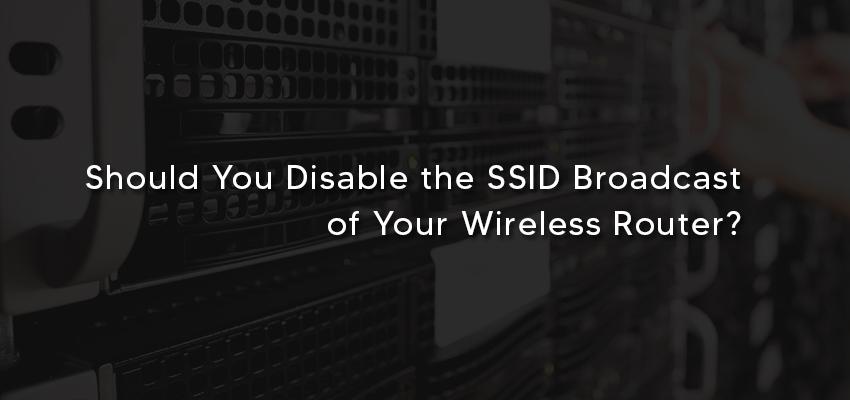
Should You Disable the SSID Broadcast of Your Wireless Router?
Posted July 9, 2020, 8:06 a.m. by Emil S.Most Wi-Fi networks and broadband routers broadcast their SSID automatically at regular intervals. That allows clients to see the network name and connect easily. The alternative is to know the name beforehand and connect manually every time. You can opt to disable this feature, but you should be aware of the advantages and disadvantages of doing that.
Advantage of Turning Your SSID Off.
The only advantage we see in disabling the network name broadcast is that your neighbors or any other persons will not know that your system is on. Some say this is added security and will deter a potential hacker from intruding. You can search for blogs and online guides in securing a wireless network, and most of them will tell you to disable the SSID broadcast.
The Other Side of The Argument
The SSIDs Should Be Visible
The SSID is there to identify a wireless network and differentiate it from other networks in the area. Steve Riley of Microsoft has maintained that the SSID was never designed to be hidden, (so) won’t provide your network with any protection if you try to hide it.”
Locating a Hidden SSID is an Easy Task
It is effortless to find a hidden network. There are many utilities available (Kismet, NetStumbler, inSSIDer, Aircrack) for that task. And they work quite effectively, too!
Hidden Networks are Cumbersome for its Primary Users
Connecting to an unknown network will be very difficult for its owners/users. You would have to set up the connection manually when you want to link a device to your wireless network.
Remember, that’s with ALL your devices. You have to set them all up manually to connect to the network.
Hidden Networks have more Potential Problems
Connection tends to drop often, and Windows will try to connect to a less preferred network instead of to an unknown network. You can disable automatic connection to the less favored network, but this is cumbersome.
Hidden Wireless SSIDs Leak Your Network Name
When a device is set on an automatic connection, it will continue to look for the set network. So, when you are in public, the device will continuously transmit information about your hidden wireless network. Anyone who has a network scanner will quickly pick up the details of your hidden wireless network at home.
Microsoft Technet says that wireless devices running on Windows XP Service Package 2 and Windows Server Service Package 1 and are set up to link with hidden wireless networks are continuously leaking the SSID of said networks, even when not in the area.
Conclusion & Recommendation
After all that myth disproving, we cannot suggest that disabling your wireless network SSID provides more security for your system. The disadvantages greatly outweigh the one unproven advantage as we have presented here.
Best Way to Protect Your Network
We confidently feel that you can secure your wireless network by using WPA2 encryption. Then make sure you have a strong security key. Having read the previous sections and you still want to hide your network name, continue reading.
How to Disable Your Wi-Fi Network SSID Broadcast?
Sign in to the router as the System administrator. Look for the SSID Broadcast page (differs from one brand to another). The default setting is Enabled. Disable the broadcast by following the specific instruction in the brand/model manual or page. Save the new setting and exit.
How to Connect to a Hidden Wireless Network
Since the SSID is not visible to wireless devices, they have to set the profile settings up manually. That includes network name and security mode. One good result is that most devices will remember these settings and will not need a reconfiguration next time.
Do You Need to Disable Your Home Network SSID Broadcast?
Generally, home networks do not need for SSIDs unless there’s a requirement to provide roaming service. For homes with only one router, disabling the SSID feature is a choice between convenience in setting up new devices, against the potential (and untested) security benefits.
On the one hand, you would need to give not only the network password to new clients but also the security mode and SSID. On the other, it MAY increase the chances that an intruder would ignore your network and focus somewhere else. It also minimizes the presence of your Wi-Fi network in the neighborhood.
